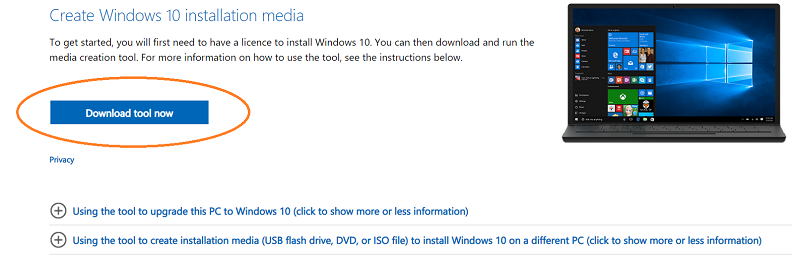After speaking to a computer recycling firm in Berkshire this week, we have a guide here to pass on to those who have had to replace their hard disk after upgrading to Windows 10 and have been left with a blank PC and a Windows 7 product key stuck to the side. This is a difficult situation as you cannot make the upgrade work again to get you back to Windows 10, but here, with a few tips from the computer recycling experts, we hope to help you get back on your feet.
Firstly - install Windows 7
This is a pretty obvious place to start. If you have the original reinstall disk for a PC then use that and get yourself back to Windows 7 installed and activated. If you do not have the reinstall disks you will need to reinstall Windows 7 from burning a DVD of the original ISO, which you can get from Microsoft here:
Just one tip here is that you should not enter your product key into the Windows 7 installer, just press skip. You are far more likely to have a successful internet activation if you type the product key in after Windows 7 has been installed and it requests a product key for activation. We don't know why, but the computer recycling people tell us this on good authority.
Getting your PC Ready
If you are having to use the ISO you will likely find that your PC installs without any network card drivers or display drivers etc. and is in a pretty unusable state. You are going to need the network or Wi Fi card as an absolute minimum to get your Windows 7 activated and be ready to re-upgrade to Windows 10.
You will need to make three updates to your newly reinstalled Windows 7 system in order to be able to install drivers, use Windows Update, and install Windows 10. Windows 10 will not install without your system being up-to-date, so you will need to get on to Windows Update and get your Windows 7 system ready. It may sound surprising, but Windows 7 does not arrive (even with the SP1 install version) ready to work with the latest version of Windows update, you need to make a few manual updates first.
Firstly you need to install KB3063858 for your system, KB3963858-x64 for sixty-four bit systems and KB3063858-x86 for thirty-two bit variants. This will allow you to run most EXE and Zip file installers and get the drivers from your PC manufacturers website. You will also need to download a suitable Internet browser like Chrome or Firefox as Internet Explorer will not download or be of any use.
Next you will need KB2685811, once again choosing the correct -x64 or -x86 variants. This update gets your PC ready for the third update you must apply and enables you to run the Windows 10 installer and activate Windows successfully with a valid Product ID. If you can, try activating your Windows PC here. We often find that we have to use the telephone version of activation as the Product ID does not allow for activation, but if you want to do the updates first and try activating then over the Internet, that often works too. Windows 7 appears to allow updates whether activated or not.
Lastly you must install KB3138612 using the correct x86 or x64 variants. This will allow you to use Windows Update successfully so that you can get your PC up-to-date and in a position to install Windows 10. Once you have Windows 7 installed and activated, you will need to be sure that you have some updates that allow you to get your PC up-to-date anyway, so you need to do the updates before going any further.
Once you have Windows 7 installed and activated
It must be noted that this guide is for people with a legal copy of Windows 7 and not for people looking to get a free copy of Windows 10 from scratch. This guide is only to facilitate carrying out the same upgrade that has been offered by Microsoft in the past and needs to be carried out again to get your Windows 10 install back. We do agree with the computer recyclers that there is far too much E-waste going to landfill and we hope that this will allow people to keep using their old machines a while longer. Now that you are installed, activated and updated, you are ready to install Microsoft Windows 10.
All you need to do to achieve this is to download 7-zip, which is a free software and install it ready for use. This software will allow us to unpack the Windows 10 software when we have downloaded it and subsequently use it to install the PC with Windows 10.
Now go to the Windows 10 download page on Microsoft and click the download now button under the create Windows 10 media section, and download and run the tool.

When prompted choose to download the ISO image of Windows 10 rather than upgrade or USB drive versions and download the ISO file to your computer somewhere that you can access easily. Now right-click that ISO file and use 7-zip to unzip the file so that you have all of the Windows 10 upgrade files somewhere on your C: drive. We will use these files for the upgrade.
Once this is complete you can run the setup.exe file in the Windows 10 folder you just created and choose to keep all of your app and files or not. Once you have decided and chosen these options, you will begin the upgrade to Windows 10. It will take a while to upgrade and download various updates as it goes, but once complete, you will have an activated copy of Windows 10 which is completely legal and ready for use.